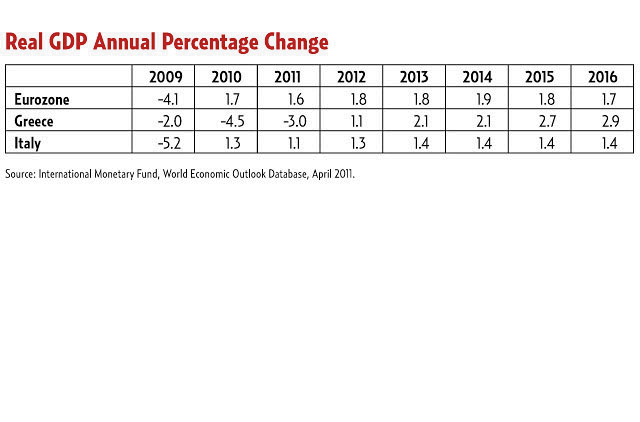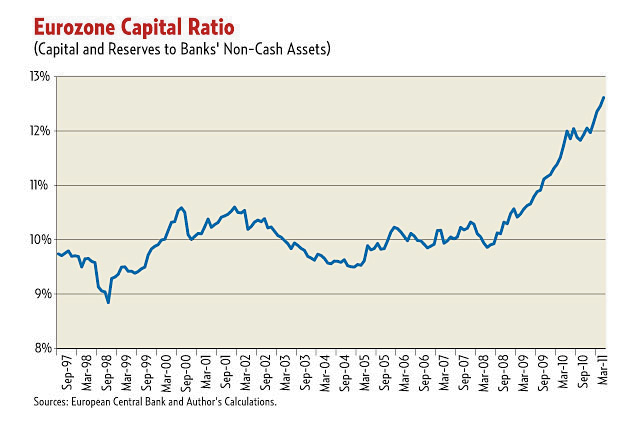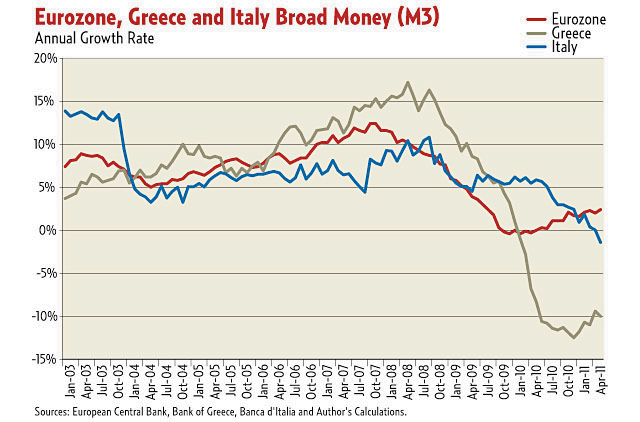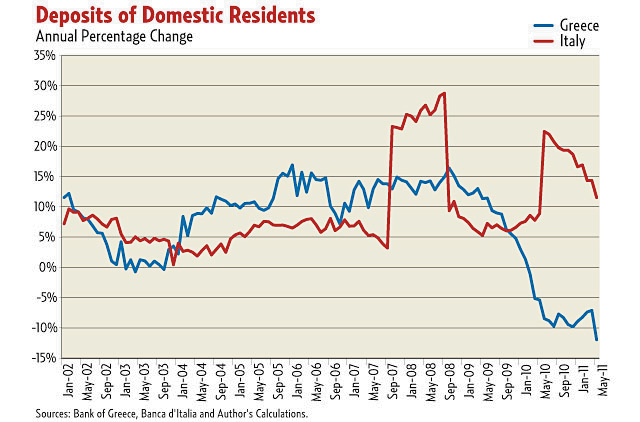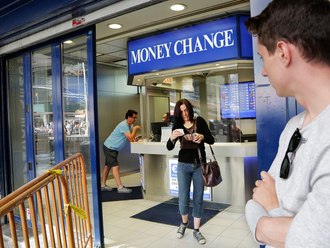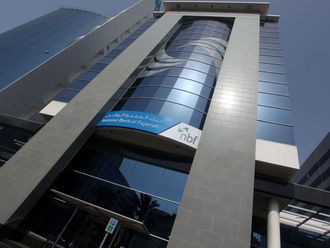
The blundering of the establishment’s oracles, particularly when it comes to making war, is common and well documented. Prof. Bruce Kuklick, in his Blind Oracles: Intellectuals and War from Kennan to Kissinger, offers persuasive arguments and a mountain of evidence to support this thesis in the spheres of foreign policy and the waging of war.
This disturbing pattern is not limited to these spheres, however. Dr Thomas Sowell’s book, The Vision of the Anointed, informs us that economic oracles often follow the same pattern as those who inhabit the offices of the US State Department and Department of Defence.
US Treasury officials and those at the Federal Reserve, as well as their advisers and supporting cast of journalists, often operate as if they were blind to the potential unintended consequences of their policy prescriptions. And because groupthink reigns supreme in establishment circles, blunders can go unchecked for long periods of time and be catastrophic.
Such a blunder is unfolding before our eyes. Since the Panic of 2008-09, if not before, the economic and financial regulatory agencies have been beating the drums for banks to raise fresh capital and strengthen their balance sheets. And if banks can’t raise more capital, they are told to shrink the amount of risk assets (loans) on their books.
Furthermore, we are told that, to avoid future crises, banks must be made stronger. One way or another, banks’ capital-asset ratios must be increased — the higher, the better.
Virtually all the establishment figures in economics and finance have jumped on this bandwagon.
Fed Chairman Ben S. Bernanke and US. Treasury Secretary Timothy Geithner have been prominent advocates of stress tests for banks and higher capital-asset ratios. The Governor of the Bank of England Mervyn King has led the charge in Britain. On the continent, Italy’s Finance Minister Giulio Tremonti and the Governor of the Bank of Italy (President-designate of the European Central Bank) Mario Draghi have frantically pressured the Italian banks to raise more capital, and most — with the exception of UniCredit, Italy’s largest lender — have complied.
Capital rules
Not surprisingly, the Bank for International Settlements — the central banks’ “bank” — located in Basel, Switzerland, has issued new Basel III capital rules. These will bump banks’ capital requirements up from 4 per cent to 7 per cent of their risk-weighted assets.
And if that is not enough, the Basel Committee agreed in late June to add a 2.5 per cent surcharge on top of the 7 per cent requirement for banks that are deemed too-big-to-fail.
For some, even these hurdles aren’t high enough. The Swiss National Bank wants to impose an ultra-high 19 per cent requirement on Switzerland’s two largest banks, UBS and Credit Suisse. In June, the upper chamber of the Swiss Parliament approved that rate. In the US, officials from the Fed and the Federal Deposit Insurance Corporation are also advocating capital surcharges for “big” banks.
The oracles have demanded higher capital-asset ratios for banks. And that is exactly what they have received. Just look at what has happened in the Eurozone (see the accompanying chart). Since the onset of the Panic of 2008-09, the Eurozone banks have, under political pressure and in anticipation of Basel III, dramatically increased their capital-asset ratios. Indeed, today’s higher ratio of capital to assets implies that the Eurozone banks have about 400 billion euros more capital today than they would have had if the capital-asset ratio had remained where it was in August of 2008.
This 400 billion euro figure represents about 4.5 per cent of the entire Eurozone M3 money supply, as of August 2008.
The oracles have erupted in cheers at the increased capital-asset ratios. They assert that more capital has made the banks stronger and safer. While at first glance that might strike one as a reasonable conclusion, it is not the end of the story.
For a bank, its assets (cash, loans and securities) must equal its liabilities (capital, bonds and liabilities which the bank owes to its shareholders and customers). In most countries, the bulk of a bank’s liabilities (roughly 90 per cent) are deposits. Since deposits can be used to make payments, they are “money.” Accordingly, most bank liabilities are money.
To increase their capital-asset ratios, banks can either boost capital or shrink assets. If banks shrink their assets, their deposit liabilities will decline. In consequence, money balances will be destroyed. So, paradoxically, the drive to deleverage banks and to shrink their balance sheets, in the name of making banks safer, destroys money balances. This, in turn, dents company liquidity and asset prices. It also reduces spending relative to where it would have been without higher capital-asset ratios.
New shares
The other way to increase a bank’s capital-asset ratio is by raising new capital. This, too, destroys money. When an investor purchases newly-issued bank equity, the investor exchanges funds from a bank deposit for new shares. This reduces deposit liabilities in the banking system and wipes out money.
By pushing banks to increase their capital-asset ratios to allegedly make banks stronger, the oracles have made their economies (and perhaps their banks) weaker.
Prof. Tim Congdon convincingly demonstrates in Central Banking in a Free Society that the ratcheting up of banks’ capital-asset ratios ratchets down the growth in broad measures of the money supply. And, since money dominates, it follows that economic growth will take a hit, if banks are forced to increase their capital-asset ratios.
The capital-raising mania in the eurozone and its consequences are clear. As the following chart shows, the rate of growth in the broad M3 measure of money has declined in the Eurozone since the onset of the Panic of 2008-09 and is currently barely above zero. The comparable picture for Greece is shocking, with M3 contracting at an annual rate of 10 per cent. Italy recently rocked the markets. Although it’s not in the grip of a death spiral like Greece, it has entered the danger zone, with M3 readings in negative territory. While capital flight (deposit withdrawals) is in full swing in Greece, as the end game approaches, it is not yet showing up in Italy (see accompanying chart). We must keep our eye on Italian deposits.
Plunging supply
The oracles’ religious embrace of higher capital-asset ratios for banks in the middle of the most severe slump since the Great Depression has been a great blunder. While it might have made banks temporarily “stronger,” it has contributed mightily to plunging money supply metrics and very weak economic growth.
The International Monetary Fund’s forecasts for the Eurozone, Greece and Italy for 2012 appear to be much too optimistic (see the accompanying table).
Until the oracles come to their senses and reverse course on their demands for ever-increasing capital-asset ratios, we can expect continued weak (or contracting) money growth, economic weakness, increasing debt problems, continued market volatility and a deteriorating state of confidence.
Steve H. Hanke is a Professor of Applied Economics at The Johns Hopkins University in Baltimore and a Senior Fellow at the Cato Institute in Washington


